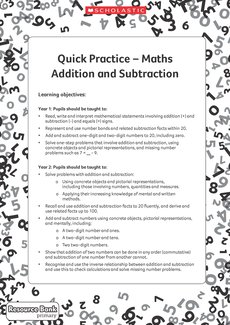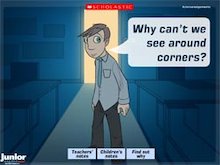Lower Key Stage 2 daily timetables – Week 1
- Supports home learning
Add to My Folder
We have created these Lower KS2 daily home-learning timetables to help your children aged 7-9 (Years 3-4) stay engaged and entertained from 9am–3.15pm!

Each timetable includes an hour’s learning on the core subjects of English and Maths, with sessions for other curriculum coverage and time for reading, breaks, snacks and daily exercise.
Remember not all days will go to plan and your child might not always be able to sit and work quietly for the allocated time. If needed, allow your child/children to pick and choose which activities they would like to do, or encourage them to focus on just one piece of learning per day.
Timetables:
1. Monday
2. Tuesday
3. Wednesday
4. Thursday
5. Friday
Monday
| Time: | Subject: | Notes: | ||||||||||
|---|---|---|---|---|---|---|---|---|---|---|---|---|
| 9.00-9.30 | PE |
Outcome/purpose: Continuous exercise for 30 minutes. Instructions: Create an obstacle course around the home for example, jumping over cushions, jogging on the spot, star jumps, crawling under the table, etc. Optional parent support: Help your child to plan and build their obstacle course. Time them to see how long it takes them to complete. | | 9.30-10.30 |
Maths |
Outcome/purpose: Practise addition and subtraction skills. Practise multiplication skills. Instructions: Download the Quick Practice – Addition and Subtraction pack. Go to pages 7-8 (for Year 3 pupils) or 9-10 (for Year 4 pupils). Complete the activities on the pages. Tip: The activity of page 7 requires a 0-9 dice. If you don’t have a 0-9 dice at home, write the numbers on scraps of paper. Fold them up and put them in a bowl and do a ‘lucky dip’ to find your random numbers! If you have time, complete this multiplication worksheet. | | 10.30-11.00 |
Break |
Pop out for your daily walk or exercise! Remember to have a healthy snack such as a piece of fruit and don’t forget to wash your hands before you eat. | | 11.00-11.30 |
Reading |
Outcome/purpose: To read for 30 minutes. Instructions: Snuggle up with a book! Choose one of your favourite books and read for half an hour. Optional parent support: Ask your child to read aloud to you and ask them questions about the story. Such as: Who is your favourite character? Why? What do you predict is going to happen? Tip: If your child is a reluctant reader, you could take it in turns and read a paragraph each. | | 11.30-12.30 |
Science |
Outcome/purpose: To learn that the nearer an object is to a light source, the bigger its shadow. Instructions: You will need: a torch, a tape measure or ruler, sheet of white card and a non-transparent object such as a book or a cup. Place the white card against a wall and use the tape measure or ruler to measure 100cm between the torch and white card. Place the non-transparent object 5 centimetres away from the torch, you should see the object’s shadow on the white card. Move the non-transparent object (it will work better the darker the room) in 5cm intervals away from the torch and towards the card. What do you predict is going to happen to the shadow? Use Activity sheet Shadow investigation results to record the effect on shadow height. For an extra challenge, transfer the information you have recorded on the Shadow investigation chart onto a bar chart and use it to form a conclusion, comparing the relationship between shadow size and distance from a light source. Can you work out the reason for this? (Activity adapted from Science investigations: Light and dark) Optional parent support: Help your child with the measurements and lead them to the prediction that the further away the object is from the torch, the smaller its shadow will be. Help your child understand that when the object is close to the torch, it is blocking more of its light out, therefore the shadow is bigger. When the object is further away, the light can escape and the object blocks less, therefore the shadow is smaller. A shadow is formed when light is blocked. | | 12.30-1.30 |
Lunch | If you have a garden or balcony, try to get some fresh air after lunch. Remember to wash your hands before eating! |
| 1.30-2.30 | English |
Outcome/purpose: To develop an understanding of the meaning of texts. Understand how to use pronouns. Instructions: Download Close Reading Non-fiction – ‘Holiday Time’ text and questions (Year 3 pupils). Or Close Reading Non-fiction – ‘Looking for Life’ text and questions (Year 4 pupils). Read the essay or article and then follow the instructions in the text-marking box. Complete the questions on the next page. If you have time, complete the second page of this Word Pronoun worksheet. Optional parent support: Use the answer sheet to check your child’s answers to the ‘Close Reading Non-fiction – ‘Holiday Time’ text and questions’ or the ‘Close Reading Non-fiction – ‘Looking for Life’ text and questions’. Download Answers here. Pronouns sheet: If help is required, underline where the pronouns should be. Your child can choose the relevant one. | | 2.30-3.15 |
Art |
To create a piece of modern art that carries a message about your life.
*Instructions:*
You will need: old newspaper and magazines, A3 paper, glue.
Before you begin your art project, think about:
_the things, people, places, that are most important to you_
_what you hope to do in the future_
_the people and places you would like to see and visit in the future_
Next, look through magazines and newspapers for any photos, illustrations, and sections of text that tie in with your life now and also your ideas of what your life will be like in the future. It might be a single word like ‘CHAMPION’, which reminds you of winning a dance competition, or an animal photo which represents your aspirations of becoming a vet.
Cut out the images and text and group them together to show the progression of your life. You can group them however you feel best suits the theme of your collage, or just to create the most pleasing effect. For instance, you could sketch a simple bare-branched tree, placing the collage pieces on the branches like leaves, or you could draw a tall sunflower, placing collage pieces up the stem like leaves, with the image of your main goal in the centre of the flower, right at the top.
(Activity adapted from our "Modern art article":https://resource-bank.scholastic.co.uk/content/Modern-art-29050)
*Optional parent support:*
Help your child to select images and text from magazine and newspapers that reflect their life now and their future goals. Help them to decide how to arrange the images and text into a collage.
|
Already a member? Sign in below.
Published 17 April 2020
Reviews
Rated 4/5 from 3 ratings
You need to be signed in to place a review.


